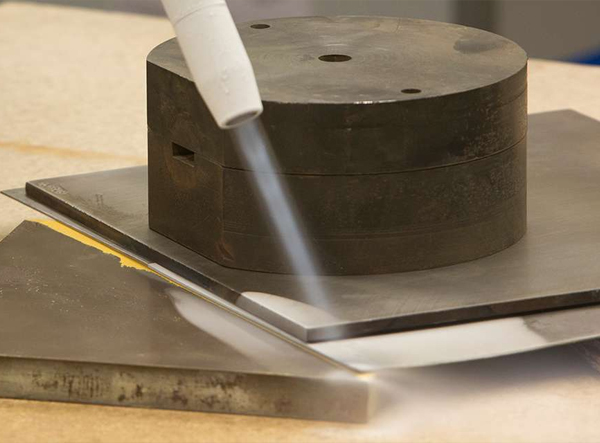Overview

The dry ice blasting uses small pellets of dry ice sprayed through a jet nozzle with compressed air to remove paints, oil, grease, dirt, ink, adhesives and other materials you want to remove. The frigid temperature of the dry ice against the dirty surface causes adhesion to shrink and loosen from the surface. On immediate impact, the dry ice evaporates into environmentally safe and innocuous CO2 gas.
Thermal differential
When the dry ice pellets cold touch the surface, a small thermic difference occurs between the coating material, the contaminant and the substrate. This provokes cracks and the detaching facilitating the removal process.
Micro – Explosion
When the dry ice touches the surface and it transforms into innocuous CO2 gas, , this tends to invade the cracks and the pores penetrating into the coating / contaminant.
Then it warms up and it expands rapidly and it makes the coating / contaminant detaching from the substrate, favouring still further the coating removal or the cleaning process.